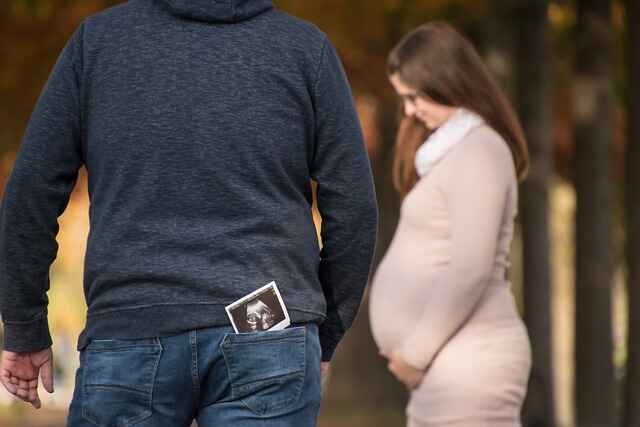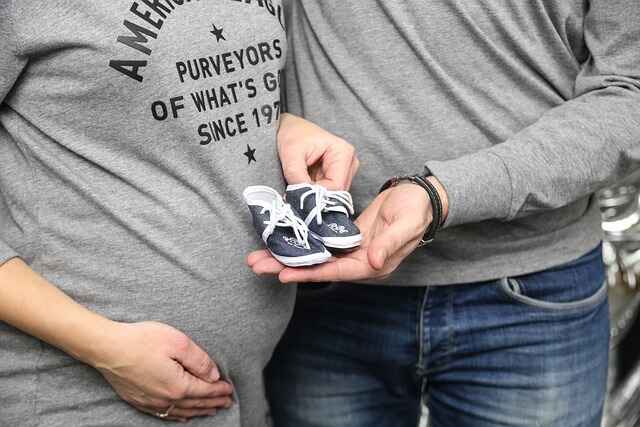Watching your tummy grow while pregnant is one of the most integral aspects of being pregnant. However, just like other aspects of pregnancy, it can be difficult to avoid being fixated on physical changes. Pregnant belly stages are all different, and that is the first thing to understand. Let’s check out all about the expanding belly, trimester by trimester.
When will the baby bump start to show?
Every pregnancy has its own distinct milestones, despite the fact that belly growth follows a typical pattern. Pregnancy bellies typically start to show 12 to 15 weeks before your scheduled second-trimester exam.
- Your height – The height of a mother’s bump can vary depending on her height. In order to give the baby more opportunity to develop vertically, taller women have a tendency to “carry high,” meaning their bump lays closer to their chest. Because there is less capacity for vertical development, shorter women frequently “carry low,” meaning their stomachs spread low and wide.
- Your weight – Your pregnant tummy will eventually appear larger the higher your BMI or pregnancy weight gain was. But earlier in pregnancy, a bump might potentially be hidden by increased body fat.
- Your age – The muscles in the abdomen and pelvis deteriorate with ageing. This implies that women over 35 who are pregnant usually start to show up earlier.
- Your pregnancy history –Your muscles and ligaments will return to their pre-pregnancy shape more readily if you’ve already given birth. This means that subsequent pregnancies usually manifest earlier than initial pregnancies, whether they be second, third, or higher.
- Your baby’s position – Babies can develop in practically any direction, which results in a wide range of belly shapes and feelings.
Also Read: What Are The 3 Trimesters Of Pregnancy? What Happens During These Trimesters?

Does the baby’s sex affect your belly shape or size?
You’ve certainly heard a few myths about how a baby’s sex can alter the size or shape of its tummy. However, in accordance with WHO growth charts distributed by the CDC:
- Females in the 50th percentile are 49.1cm in length and weigh 7 lb 2 oz.
- Males in the 50th percentile are 49.9cm in length and weigh 7 lb 6 oz.
- Gender does not explain the clearly distinct tummy sizes of pregnant women, even though the boy and girl newborns may weigh and measure 4 ounces and 0.8 cm differently.
Types of Pregnant Belly Shapes
Every pregnant belly is different. Having said that, there are various methods that childbirth experts evaluate the shapes of pregnant bellies that can act as markers for a healthy, happy pregnancy. Four descriptive categories best describe most pregnancy bumps:
- Small vs. large belly – Optics frequently determine belly size. For example, a pregnancy bump of the same size may appear small on a tall woman and monstrous on a short woman.
- Pointed vs. wide belly – Tall women frequently have wide or “spread” tummies due to their larger torsos. In contrast, the bellies of short women and those who have diastasis taper to a “point.”
- High vs. low carry – Your physical makeup will have the largest impact on whether you carry high or low. Women who are athletic or young, have longer torsos or have tight abdominal muscles frequently bear their weight high in their tummies.
- B-shaped belly – The term “B Belly” refers to the midsectional crease that forms on a pregnant belly. Usually, this shape results from weak abdominal muscles or a lot of body fat.

First Trimester: Weeks 0 to 13
Technically, the first day of your last menstruation marks the start of your first trimester (as opposed to the date you conceived). You might experience bodily changes throughout the following 13 weeks that point to your developing baby, such as:
- Up to a 4-centimeter fundal height gain
- 1 to 4 pounds of maternal weight increase
- Changing belly size and form
- Know that your body is changing a lot during your first trimester even if you haven’t noticed any tummy growth.
Second Trimester: Weeks 14 to 27
The calmer second trimester replaces troublesome first trimester symptoms, such as nausea, with belly growth, which is why it’s frequently referred to as the “eye of the storm.”
- Your body will acquire characteristics such as:
- A maximum 17-centimeter increase in fundal height (about 1 centimetre per week)
- 14 to 28-pound increase in weight (1 to 2 pounds per week)
- stretch stains on the stomach, legs, and other body parts
Your fundal height may reflect how far along you are in your pregnancy from week 24 till your due date (i.e., at week 26, your fundal height should measure approximately 26 centimeters).
Third Trimester: Weeks 28 to 40
Your third trimester is the final stretch for belly growth and contour. Up until the day of delivery, your belly will continue to grow, and you’ll probably experience physical changes like:
- Growth of the fundament by up to or more than 26 centimetres (about 1 centimetre per week)
- Gaining 9 to 18 pounds in weight (1 to 2 pounds per week)
- In the third trimester, many pregnant women experience a belly drop, commonly referred to as “lightening,” which can result in a lower carry. This is a very normal symptom that your baby will give birth in a few weeks.
Post Partum: Your Post-Pregnancy Belly Shape & Size
Every new mother has a range of emotions after meeting her child. Being compassionate and patient with yourself while you adjust to motherhood is essential, and this goes for adjusting to your postpartum body as well.
- After giving delivery, you can see stretch marks, scars, and discolouration, or your linea nigra doesn’t fade. Between six and twelve months following delivery, they normally start to diminish.
- You may see some extra flesh hanging over your c-section scar if you had a caesarean delivery.
Also Read: Pregnancy and Pre-existing Diabetes – Everything You Should Know About





